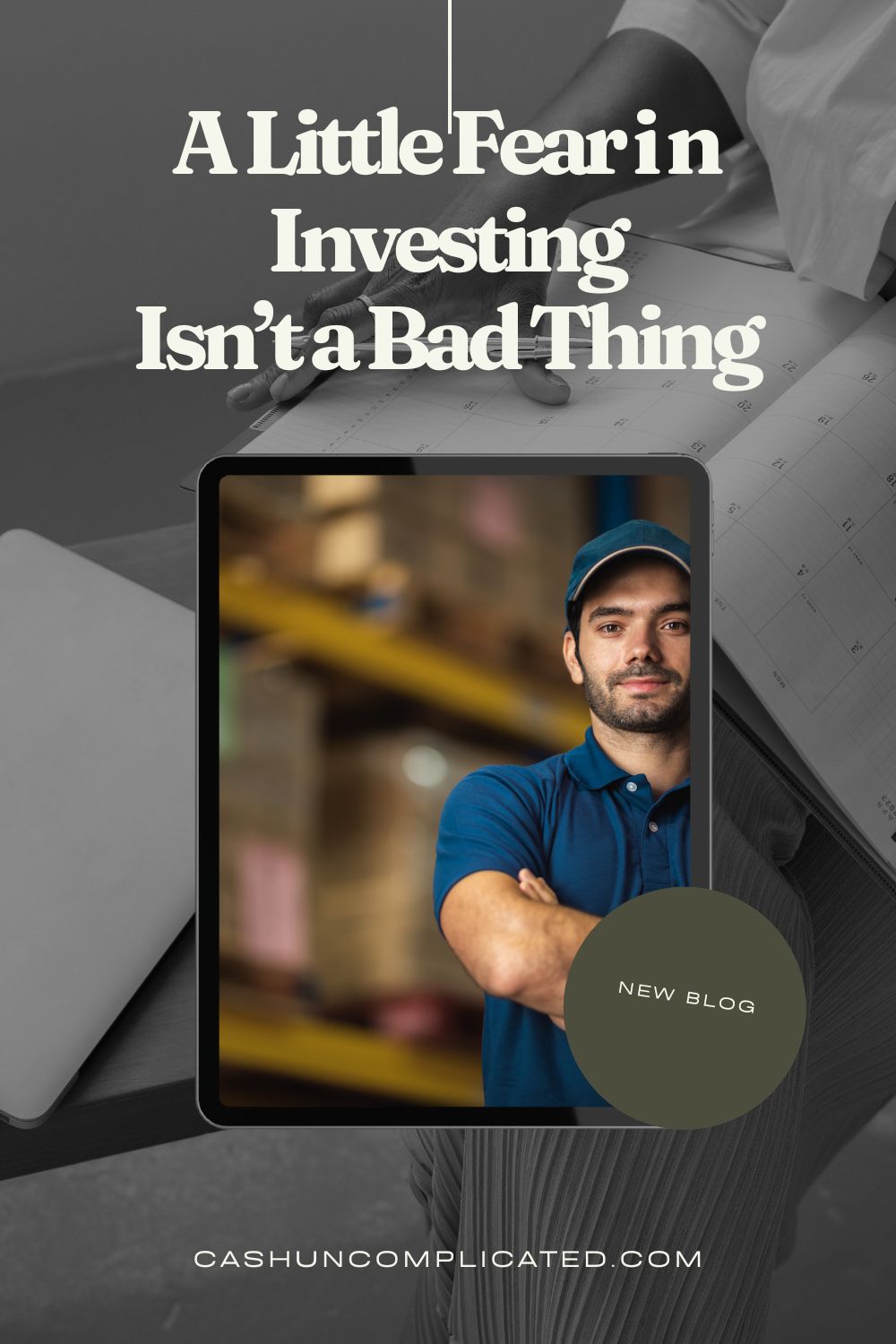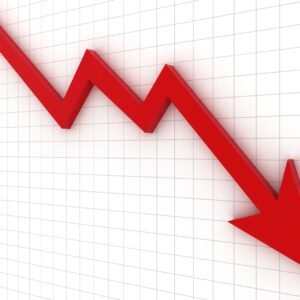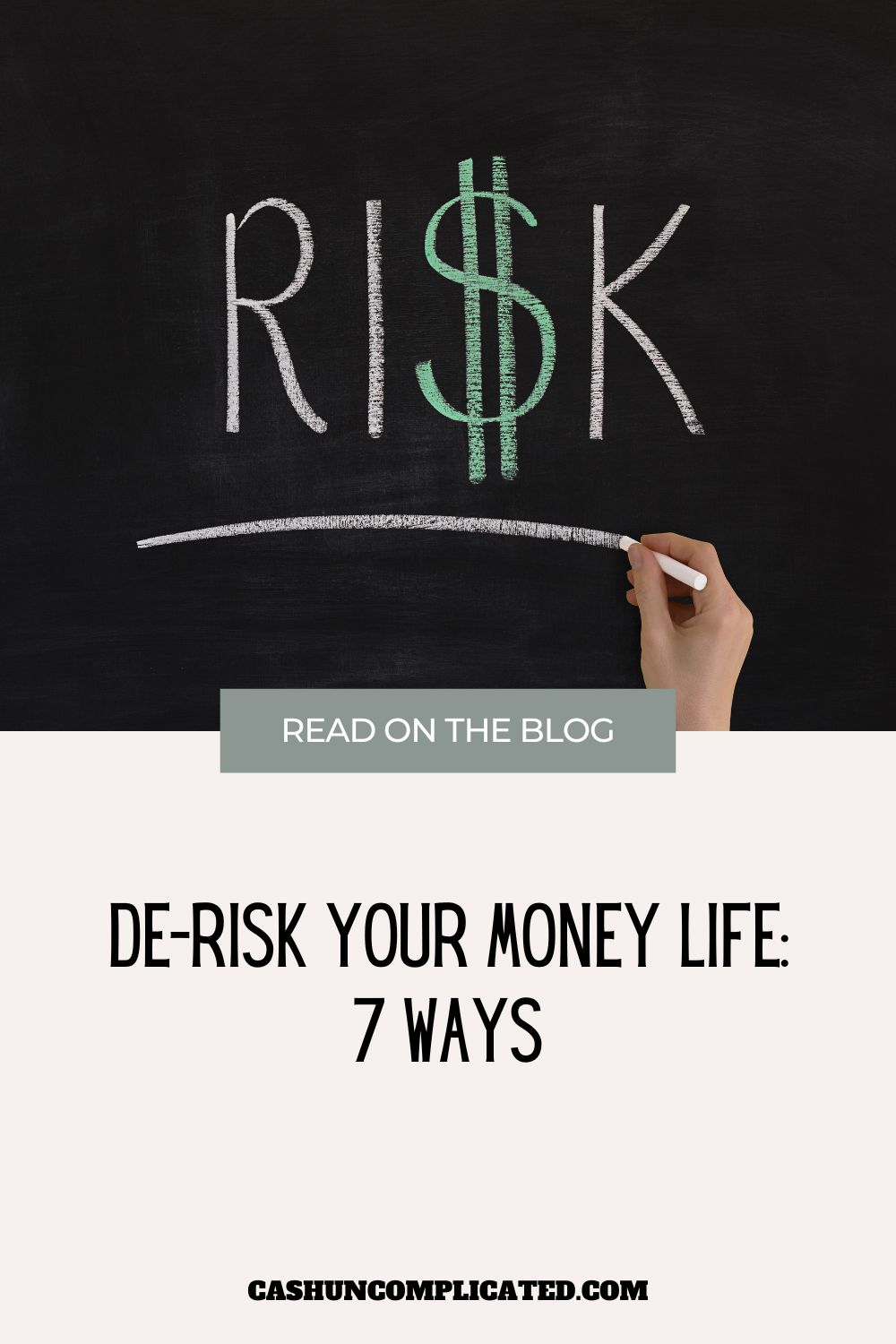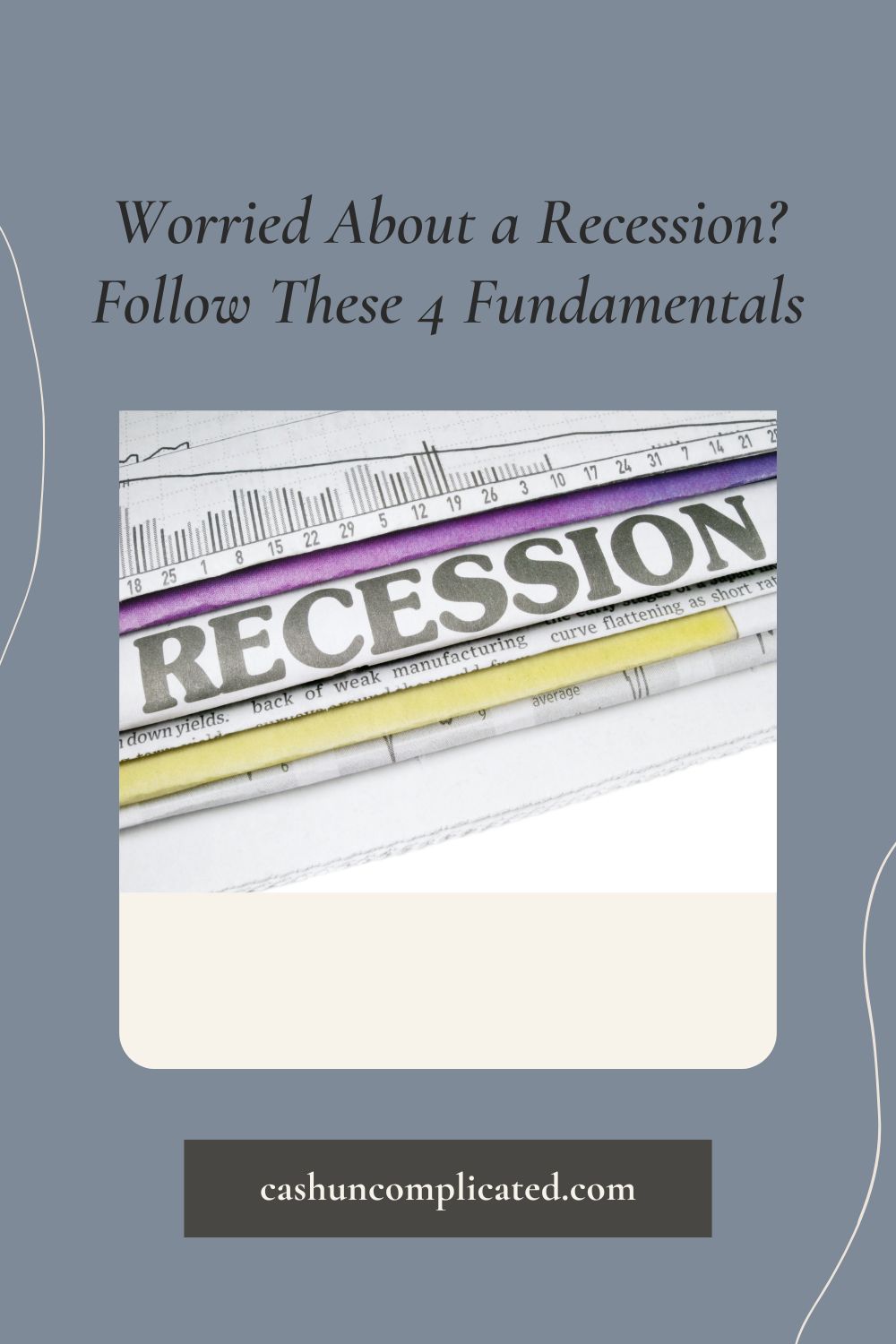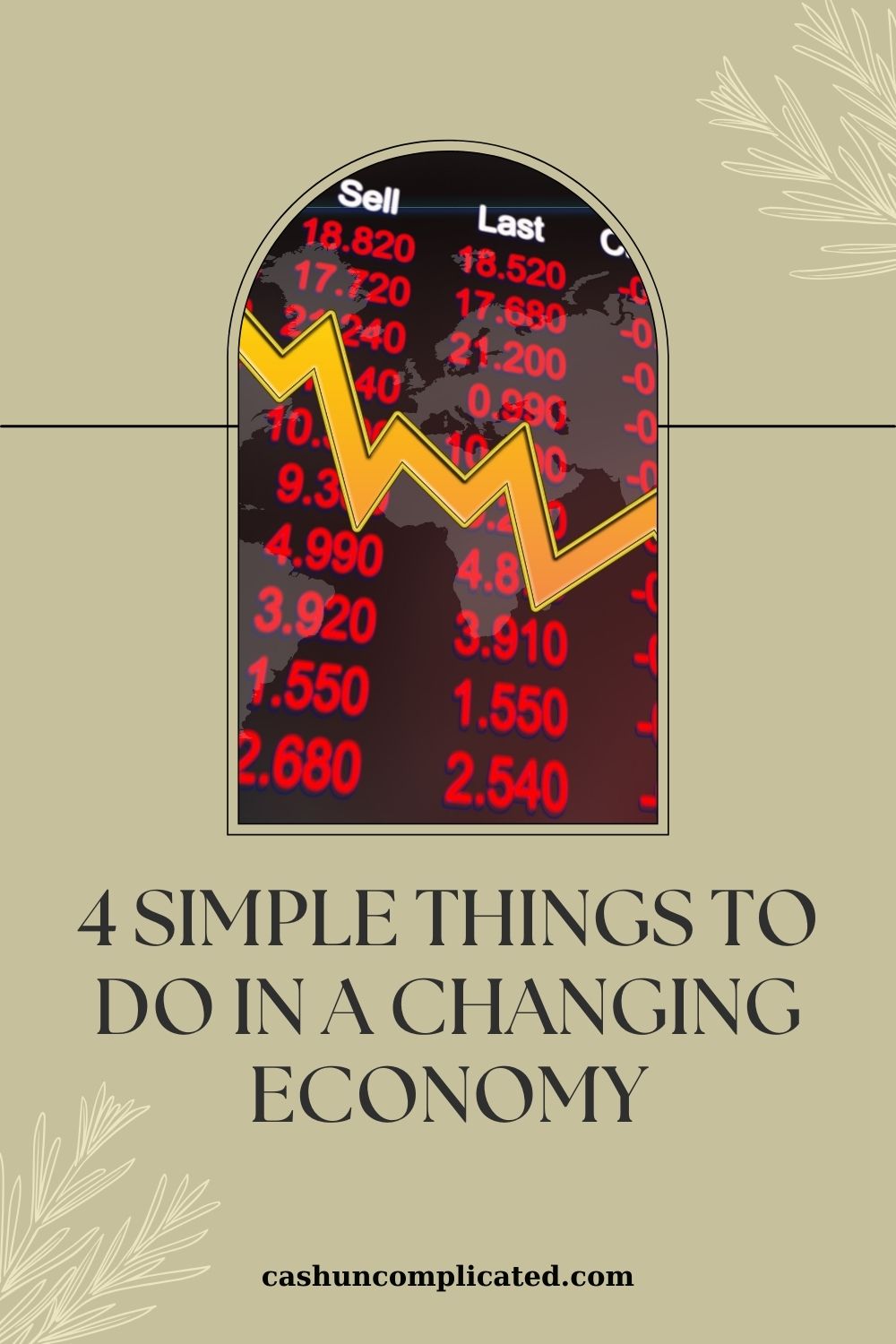I consider myself a generally optimistic person. That includes my personal finances, investments, and overall money outlook. Despite my overall optimism, I’ve learned that a little bit of fear in investing isn’t such a bad thing.
The Presence of Fear Acknowledges Risk
Last week I wrote a post about risk and money. The premise of my post is that there is risk with money no matter what decisions you make. There is no way to completely eliminate all risk.
I’m following it up this week with a post about fear and money because fear is a way of telling ourselves to watch out. It’s a warning sign that we should be looking for possible danger. Fear is an acknowledgement that risk is present.
Not seeing risk in personal finance is a big mistake. Unexpected things happen in money and life–and we have to see that as risk. Simply ignoring it or remaining ignorant won’t protect us during challenging times.
There’s an advantage to acknowledging risk. It gives us an increased awareness of potential danger in addition to scenarios we can’t predict, but will inevitably exist. Fear and risk assessment are tools we should use to help protect ourselves from being overly aggressive.
Fear is a Form of Regulation
A healthy amount of fear is a form of regulation. If I’m mountain biking on a steep hill, I should have some fear of falling, or even worse, falling down the mountain. That fear is going to lead me to take precautions and watch out for increased danger.
This will lead to better decision making about which trails to follow, when to brake, when to take things a little slower, etc.
The same thing goes for investing. If I have some fear of the potential pitfalls, I can take the necessary actions to prevent them.
For example, the use of leverage is a risky investment strategy with high upside and increased risk. Understanding the risks of leverage and acting accordingly will likely help avoid bigger potential problems.
Investments Don’t Always Go Up
Especially when times are good, there’s a prevailing thought that investments always go up. Historically speaking, both real estate and the stock market have gone up over long periods of time. However, during shorter amounts of time, both investments have temporarily lost value before ascending again.
This is especially impactful for those with specific time horizons. Like someone needing to turn a six or seven figure profit in less than five years. Or a 75-year old retiree who needs the money now.
During these short time horizons, it’s very risky to think that investments always go up because time is not on your side. The money is needed within too short of a timeframe.
Then there are riskier investments with larger upsides like crypto, angel investing, speculative stock trading, etc. There is absolutely no guarantee that investments like these will go up, even with the gift of a longer time period. A startup could be out of business in four years, putting your investment at a total loss.
Same for a speculative stock–that company could fail and you’re out your capital. Cryptocurrencies can also easily fall to zero, resulting in you losing all your money.
Blind Optimism is Dangerous
Like I wrote earlier, I consider myself to be an optimistic person. But I’m not a blind optimist. There’s a big difference between an optimist and blind optimist.
For example:
- An optimist dollar-cost averages and expects the market to go up over a multiple decade timespan. A blind optimist picks one tech stock, invests a large sum of money, and expects it to double in the next three years.
- The optimist buys a rental property with a plan to pay down the mortgage over the next twenty to thirty years. While the blind optimist gets involved in a speculative real estate deal promising 30 percent returns year over year, and expects those returns or even greater.
So there’s a big difference between the optimist and blind optimist. The optimist understands market fluctuations and builds risk into their plan. They aren’t quitting their job after one successful year of investing.
Reality Check
Every now and then we need a reality check in investing. This is where a healthy dose of fear can help us out. Part of fear is having the wisdom to know when you are lucky and when you are skilled.
For example, anyone investing in real estate from 2012-2021 was lifted up by market conditions. A homeowner could have bought any house in 2012 and if they just held, the value would have gone greatly up. Especially in markets like Orange Country, Austin, Nashville, the Bay Area, Denver, San Diego, and other markets that experienced massive appreciation.
There really wasn’t a lot of skill other than taking the initiative to buy. Even without adding any upgrades or value adds, the real estate was going to appreciate no matter what someone did or didn’t do to the property.
If you’ve had a lot of success investing, ask yourself if that was really due to skill or you had some luck with market trends. I know when I ask myself this question, I had skill in the sense that I regularly invested, but also a huge amount of luck with the way the market trended.
Checks and Balances
Part of navigating risk is having checks and balances. Fear is one of those checks and balances. All optimism and no fear create risky financial situations.
You may get lucky and avoid big issues for a few years, but eventually the risk will catch up to you.
A little bit of fear to inspire more checks and balances is a good thing. It will help you to slow down, put some systems into place, and make it a habit to assess where you are with your money.
Creating simple systems will prevent a lot of big problems from occurring down the line. And prevention is a whole lot better than having to react to a crisis.
Seeing Both Sides
Fear allows us to see both sides. While blind optimism keeps our blinders on and prevents us from seeing potential pitfalls from our choices and actions.
Let me conclude this final section with the caveat that I am not risk averse. I just want to take calculated risks after having thought of potential issues that could arise.
So optimism and ingenuity allow us to see the upside and good that can come from things like investing in a new business, syndication, real estate, etc. Fear can help us see the downsides of these new endeavors and look for potential issues that can cause trouble down the line. In other words, fear allows us to do a better risk assessment.
Then once we’ve done our risk assessment, we’re able to proceed with more confidence now that the due diligence has been completed.
Conclusion
Fear is often a four letter word. There are acronyms for it like False Evidence Appearing Real. My stance on fear though is that a healthy amount of it can actually help you, especially when it comes to investing. “All gas and no brakes” sounds great, but in practice it’s a very risky way to invest.
Everyone has their own opinion about fear, and yours is going to be different from mine. The one thing we can all do is use whatever amount of fear we have to our advantage. Especially when it comes to investing in new things.
How has fear helped you in your investing career? Or conversely, how has fear hindered you?

